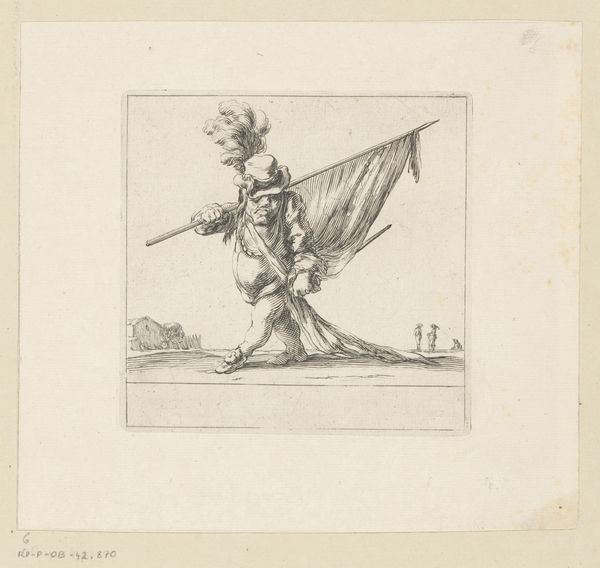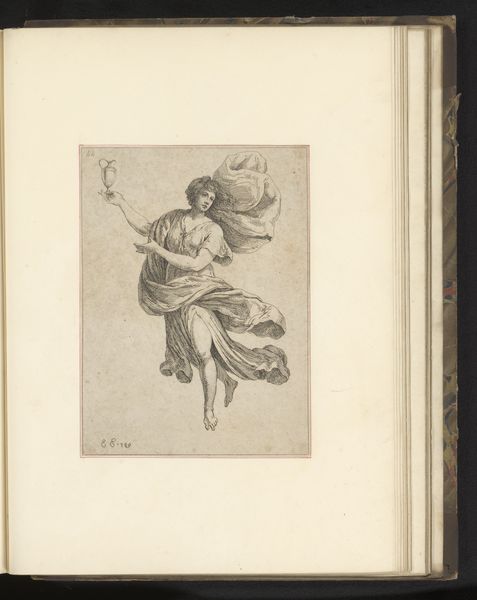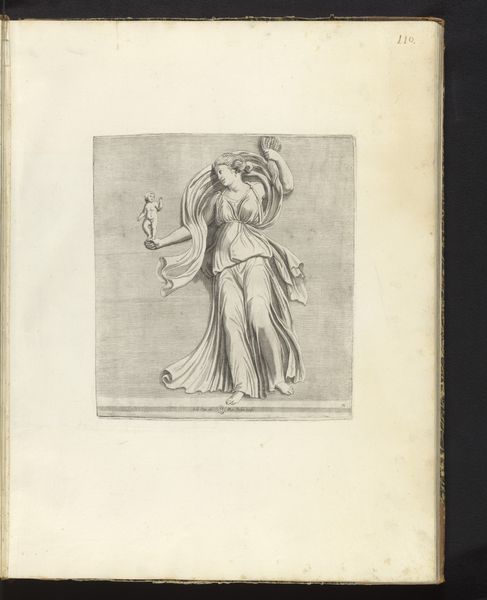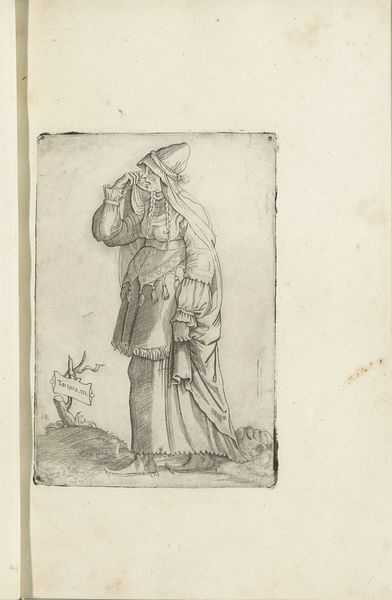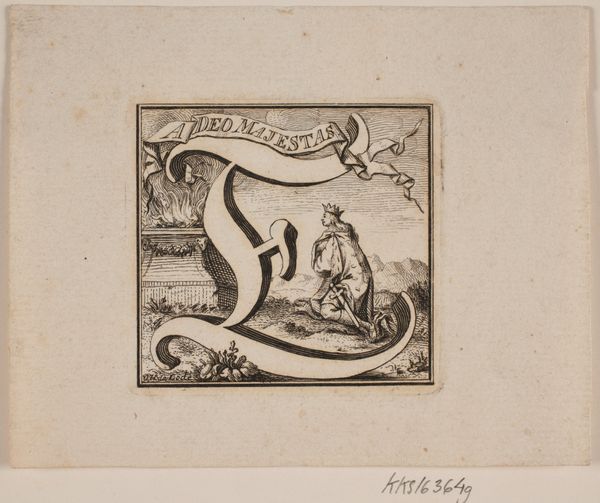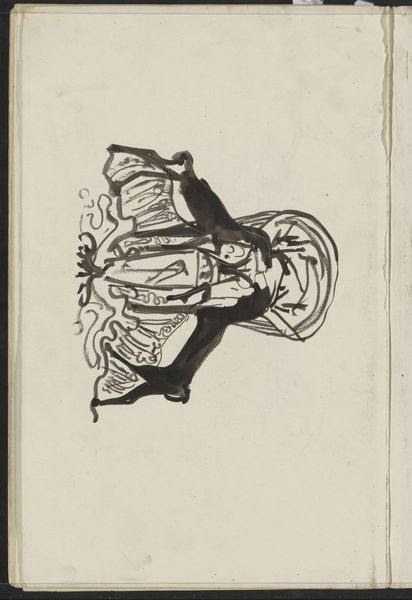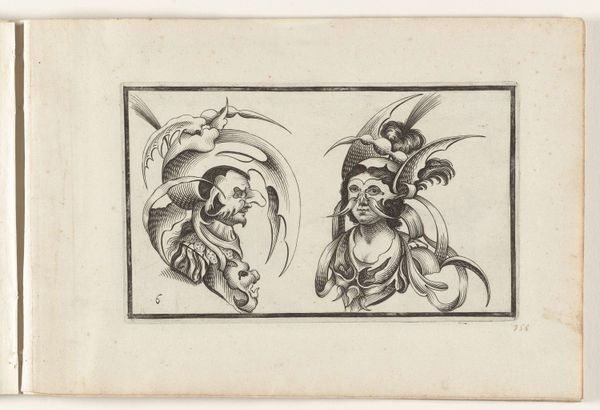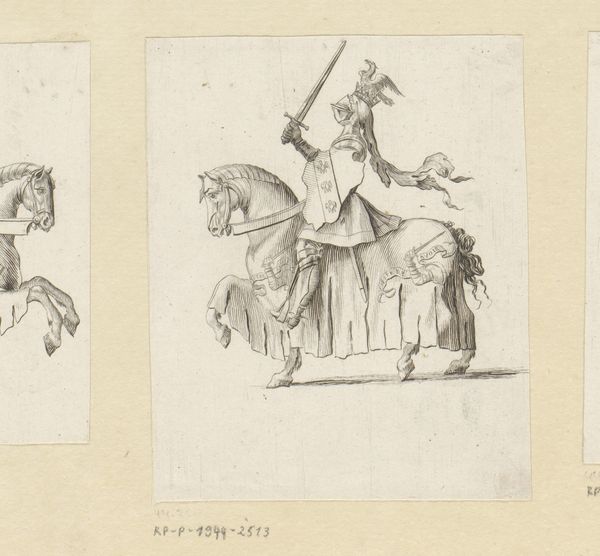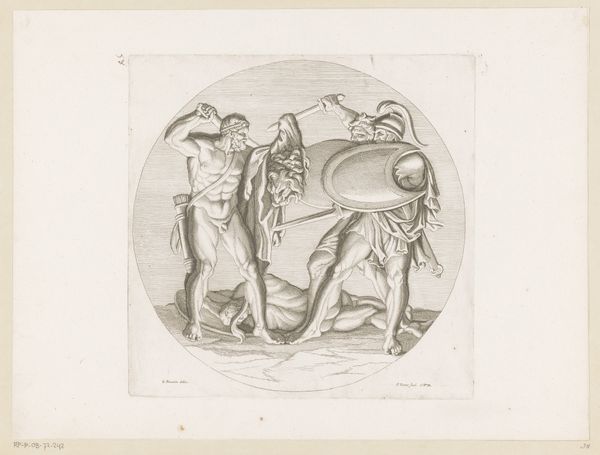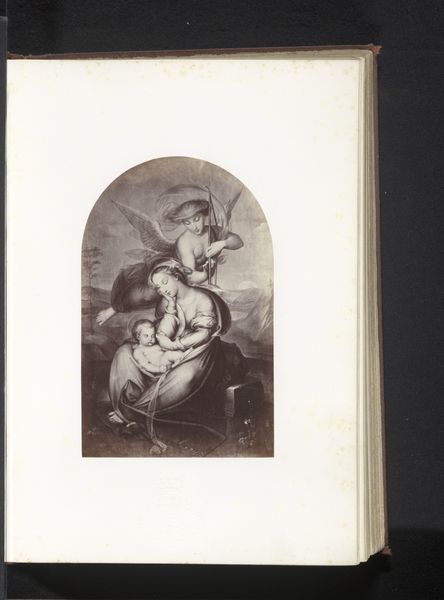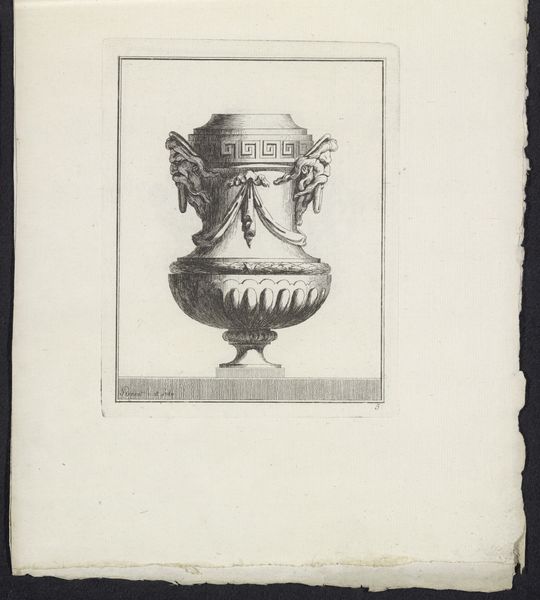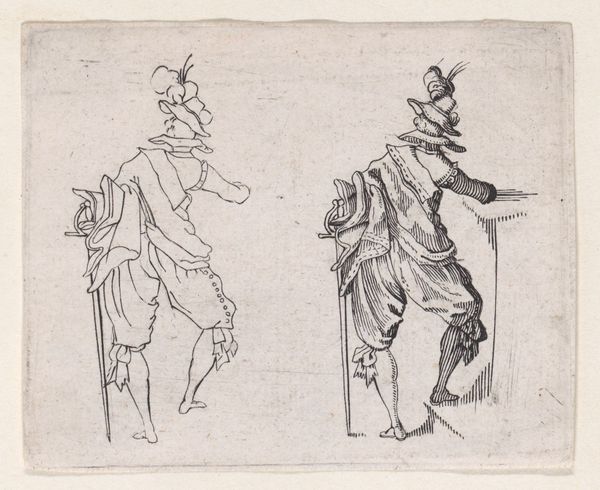
print, engraving
#
baroque
# print
#
fruit
#
genre-painting
#
engraving
Dimensions: height 98 mm, width 72 mm
Copyright: Rijks Museum: Open Domain
Curator: This engraving is titled "Koopman met vruchten, groente en ganzen," or "Merchant with Fruits, Vegetables, and Geese," by Francesco Villamena, dating approximately from 1576 to 1624. Editor: My first impression is the striking composition—the heavy basket teetering precariously on the merchant’s head contrasts so starkly with the lifeless bird dangling from his hand. There’s a tension here between abundance and a certain sense of weariness or resignation. Curator: That's an astute observation. Villamena, active in Rome during this period, frequently depicted scenes of everyday life, imbuing genre painting with a strong dose of social observation. What’s fascinating here is the depiction of labor and trade. This print likely circulated among collectors, offering them a glimpse into the commercial bustle of the time. Editor: Yes, but who is this figure? To my eye, he appears to be a Black man. The way he is presented – burdened by goods, his ethnicity possibly underscored – raises difficult questions about the portrayal of marginalized figures within the context of European commerce. This is not just a quaint genre scene; it could be a visual document of power imbalances. Curator: It’s critical to remember the historical context in which this work was created, including a society reliant on enslaved and exploited labor. Visual representations are never neutral. This engraving gives access to period-specific power structures between social groups through the public role that images play. Editor: Precisely. Looking at the precise engravings capturing textures – the weave of the basket, the smooth skin of the fruit, the feathers of the geese – I see technical skill being used, maybe unconsciously, to reinforce a social hierarchy. The artist gives considerable thought to representing the merchandise and does not extend this thought to the person vending the goods. Curator: So, you see in this portrayal the politics of image construction, what do you mean? Editor: Exactly! While Villamena may not have intended a deliberate critique, his choices – the heavy burden, the simplified representation of the man’s features – speak volumes about prevailing attitudes. Examining pieces like this helps us decode visual language and the unspoken power dynamics it often encodes. It pushes art history to directly engage with contemporary theories about representation. Curator: Agreed. Looking at Villamena's work encourages a deeper dive into these undercurrents in early modern art. Editor: For me, approaching this print via those questions concerning gender, race, and class deepens the work far beyond its face.
Comments
No comments
Be the first to comment and join the conversation on the ultimate creative platform.
